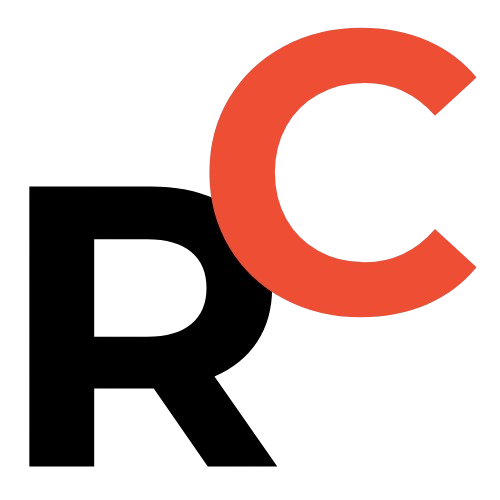Key Points
- The ChiNext (Chuangye Ban 创业板) board now accepts IPO applications from unprofitable, high-quality, innovative companies, marking a significant shift for China’s tech ecosystem. This was announced on June 18, 2025, and the first company, Shenzhen Dapumicroeletronics Co., Ltd. (Dapuwei 大普微), had its application accepted on June 27, 2025.
- The ChiNext board is a vital part of China’s innovation strategy, currently hosting 1,382 listed companies with a total market capitalization over ¥13 trillion RMB ($1.8 trillion USD). Nearly 90% are high-tech enterprises, and 70% are in strategic emerging industries.
- Dapumicroeletronics (Dapuwei 大普微), the first unprofitable company approved, specializes in enterprise-grade SSDs with independently developed controller chips. They are the #4 player in China’s enterprise-grade SSD market (6.4% share), and have invested ¥737 million RMB ($102 million USD) in R&D over the last three years (36.15% of cumulative revenue).
- Dapumicroeletronics’ financials show strong growth: 2024 revenue was ¥962M ($133M), an 88.73% increase, with significantly narrowed net losses (¥191M, $26M). They expect to achieve profitability by 2026.
- To balance innovation with investor protection, unprofitable companies will have a special “U” mark on their stock ticker, face stricter scrutiny, continuous disclosure requirements, and tougher share lock-ups for controlling shareholders.

The ChiNext unprofitable listing rule is officially live, and it’s a massive deal for China’s tech and startup ecosystem.
On June 18, 2025, the head of the China Securities Regulatory Commission (CSRC), Wu Qing (Wu Qing 吴清), dropped a bombshell at the Lujiazui (Lujiazui 陆家嘴) Forum.
He announced that China’s NASDAQ-style ChiNext (Chuangye Ban 创业板) board would start accepting IPO applications from high-quality, innovative companies that aren’t yet profitable.
Fast forward to June 27, 2025, and we already have our first taker.
Shenzhen Dapumicroeletronics Co., Ltd. (Dapuwei 大普微) just had its IPO application accepted by the Shenzhen Stock Exchange (SZSE).
This makes them the very first unprofitable company to get the green light for a ChiNext listing.
According to the SZSE, this move is all about boosting “inclusivity for early-profit and unprofitable enterprises” and opening up new funding pipelines for top-tier innovators.

Resume Captain
Your AI Career Toolkit:
- AI Resume Optimization
- Custom Cover Letters
- LinkedIn Profile Boost
- Interview Question Prep
- Salary Negotiation Agent

Why ChiNext is Betting on “Innovative and High-Growth” Startups
Let’s zoom out for a second.
The global stage is getting more complex, with intense competition among major powers heating up a new tech and industrial revolution.
Against this backdrop, China is seeing a wave of homegrown innovative companies with critical core technologies and huge market potential.
The ChiNext board has been a key player in this, acting as a launchpad for China’s innovation-driven strategy.
After nearly sixteen years, it’s become a powerhouse, nurturing a portfolio of high-quality tech companies.
The numbers speak for themselves. As of today, the ChiNext is home to:
- 1,382 listed companies
- A total market capitalization over ¥13 trillion RMB ($1.8 trillion USD)
- Nearly 90% are classified as high-tech enterprises
- Roughly 70% are in strategic emerging industries
The average R&D intensity on the board is over 5%, and almost half of the companies have seen their revenue and market cap double after listing.
We’re seeing clear industry clusters forming in:
- New-generation information technology
- New energy
- Biotechnology
- New materials
- High-end equipment manufacturing
Together, these sectors represent a market cap of more than ¥9 trillion RMB ($1.25 trillion USD), making up a staggering 75% of the entire board’s value.
This isn’t an accident. The ChiNext has been laying the groundwork for this for years, building the institutional muscle to support growth-oriented tech companies, even those burning cash on the path to greatness.
“Activating the relevant ChiNext listing standards at this time is opportune and an inherent requirement for strengthening the capital market’s support for technology innovation enterprises,” one banking professional noted.
This is the market responding directly to the needs of tech companies that prioritize long-term growth and innovation over short-term profits.

Meet the First Taker: A Deep Dive into Dapumicroeletronics’ IPO
So, who is this first unprofitable company to test the waters?
Dapumicroeletronics (Dapuwei 大普微) is in the business of enterprise-grade solid-state drives (SSDs) for data centers.
Critically, they have their own independently developed controller chips and firmware—a huge deal in the hardware world.
Over 70% of the drives they’ve shipped feature their own in-house controller chips.
Because they have a differential voting rights structure, they’re using the ChiNext listing standard that requires an “expected market capitalization of not less than ¥5 billion RMB ($690 million USD) and revenue of not less than ¥500 million RMB ($69 million USD) in the most recent fiscal year.”
A look under the hood shows a company with deep tech and explosive revenue growth.
Here’s the breakdown:
- What they do: Their SSDs are the backbone of data infrastructure, used in cloud computing, AI model training, and by major internet companies and China’s three big telecom operators. They are a key player in the push for localization of enterprise-grade SSDs.
- Market Position: According to IDC, Dapumicroeletronics is the #4 player in China’s enterprise-grade SSD market with a 6.4% share, steadily gaining on foreign competitors. This is a classic import substitution play.
- R&D Muscle: Over the last three years, they’ve poured ¥737 million RMB ($102 million USD) into R&D. That’s a whopping 36.15% of their cumulative revenue. They are also designated as a national “specialized, refined, distinctive, and innovative” (Zhaun Jing Te Xin 专精特新) “little giant”—a prestigious title for high-tech SMEs.
- IP Portfolio: As of the end of 2024, they hold 156 invention patents and are involved in 2 national-level and 4 provincial-level major research projects.
- The Ask: This IPO aims to raise ¥1.878 billion RMB ($260 million USD) to fund next-gen chips, SSD industrialization, and a new mass production testing facility.
Now, for the financials:
- Revenue (2022-2024): ¥557M ($77M), ¥519M ($72M), and ¥962M ($133M)
- Net Loss (2022-2024): ¥534M ($74M), ¥617M ($85M), and ¥191M ($26M)
Notice the trend? In 2024, revenue shot up 88.73%, gross profit turned positive, and losses narrowed significantly.
The company expects to hit profitability by 2026.
Industry insiders emphasize that while China is the world’s second-largest market for these SSDs, foreign manufacturers dominate.
Supporting a company like Dapumicroeletronics is about more than just one IPO; it’s a strategic move to build a secure, self-reliant domestic supply chain for critical tech components.

Find Top Talent on China's Leading Networks
- Post Across China's Job Sites from $299 / role, or
- Hire Our Recruiting Pros from $799 / role
- Qualified Candidate Bundles
- Lower Hiring Costs by 80%+
- Expert Team Since 2014
Your First Job Post

The Fine Print: Balancing Innovation with Investor Protection
Opening up to unprofitable companies is exciting, but it also comes with risks.
The market needs to avoid “pseudo-innovation” — companies that just dress up in tech jargon to cash in.
The SZSE is making it clear that regulation will go hand-in-hand with this new era of development.
Here are the guardrails being put in place for unprofitable listings:
- Strict Scrutiny: The SZSE will be heavily vetting applications to prevent “pseudo-technology” and ensure financial data is rock-solid.
- The “U” Mark: After listing, unprofitable companies will have a special “U” added to their stock ticker to clearly identify them to investors.
- Continuous Disclosure: Until they’re profitable, these “U” companies must regularly report on why they are unprofitable and how they’re progressing toward their profitability goals.
- Stricter Lock-ups: Controlling shareholders, founders, and executives will face tougher share lock-up requirements to align their interests with long-term investors.
- Strict Scrutiny: Applications heavily vetted to prevent “pseudo-technology” and ensure solid financial data.
- “U” Mark: Unprofitable companies will have a special “U” on their stock ticker for clear identification.
- Continuous Disclosure: Regular reporting on unprofitability and progress towards profitability goals required until profitable.
- Stricter Lock-ups: Tougher share lock-up requirements for controlling shareholders, founders, and executives.
“At the same time, the market must objectively and calmly address the fluctuations and risks in the growth of technology enterprises, fostering a market ecosystem that embraces innovation,” an investment banking pro told reporters.
The SZSE has also stated it will use counter-cyclical adjustments to balance the primary (IPO) and secondary (trading) markets.
This strategic pivot is designed to channel capital more effectively into deep tech, fostering a powerful cycle between technology, capital, and industry.
Ultimately, this reform is about more than just one company or one new rule; it’s a foundational shift to enhance market quality, stability, and China’s overall tech competitiveness by making the ChiNext unprofitable listing a viable path for the nation’s most ambitious innovators.

ExpatInvest China
Grow Your RMB in China:
- Invest Your RMB Locally
- Buy & Sell Online in CN¥
- No Lock-In Periods
- English Service & Data
- Start with Only ¥1,000





